The Anti-‘White Lotus’ Giving Voice to Native Hawaiians and Their Colonialist Struggle
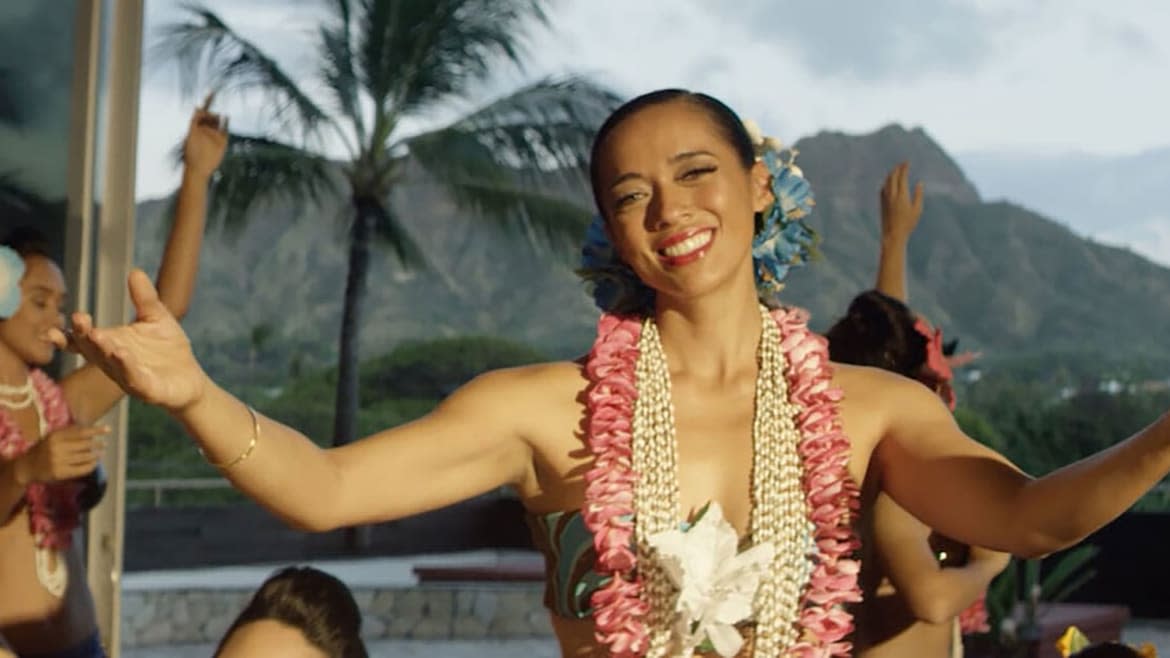
Chris Kahunahana has been trying to make films for nearly 30 years.
Finally, his debut feature Waikiki has seen the light of day, first screened to audiences at the Hawaiian International Film Festival amid the ongoing pandemic in December of 2020. It is credited as the first narrative feature-length film written and directed by a native Hawaiian filmmaker.
In Hawaii, there is no shortage of stories to tell. “Our traditions were passed down orally. So storytelling is just a part of what we do as Hawaiians,” he says.
The shortage is in the funding.
“Making this film was a challenge, next to impossible,” Kahunahana explains. “You have to have perseverance.” For viewers, it probably isn’t immediately obvious that the film was done “run and gun” style over a period of seven long years. To his credit, Kahunahana makes up for his lack of resources with sheer enthusiasm for his craft.
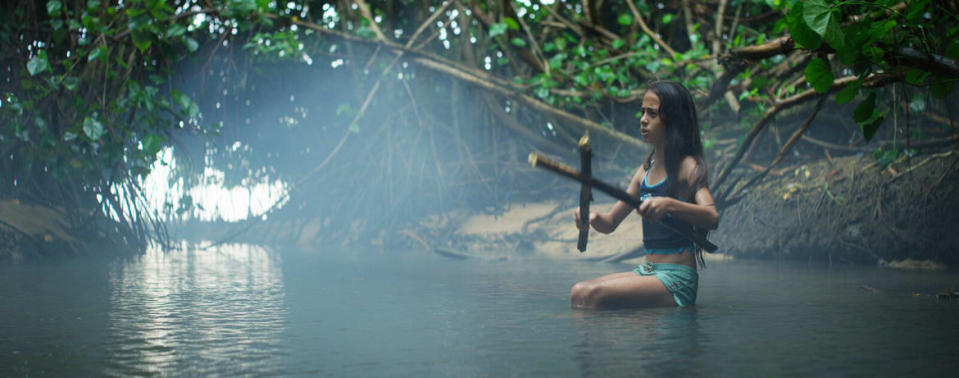
A scene from Chris Kahunahana's Waikiki
Hawaii is one of the most expensive states to reside in, with a high cost of living coupled with a low median income. Kahunahana says there’s a lot of talent within the “small but mighty” Hawaiian filmmaking community, but many are forced to work other jobs while balancing a film production just to stay afloat.
This is the norm for kānaka maoli filmmakers, as Native Hawaiians call themselves in their language. But Kahunahana had something to say. He gave up a glamorous life curating art shows in San Francisco and New York, running underground, independent film festivals, and owning a nightclub in Honolulu, to chase his filmmaking dream. From there, Waikiki was born.
‘The White Lotus’ and the Twisted Allure of ‘Quality White Mess’
The film is influenced by the people and places in Kahunahana’s life in Hawaii—it’s the side that non-Hawaiians don’t often get to see. Waikiki centers on Kea (Danielle Zalopany), a strong yet sympathetic native woman on the run from an abusive boyfriend and juggling multiple jobs when she accidentally rams her van into a man in Honolulu. Eventually, we see Kea reach her lowest point: houseless, broke, and in deep physical and emotional pain. For those who aren’t getting it: Kea is Hawaii.
“The trauma that she experiences, Hawaii as our ʻāina [land] has experienced,” Kahunahana explains. He describes the decimation of the Native Hawaiian population at the turn of the century, in which a people who numbered almost 1 million was reduced to less than 40,000. It’s a sobering reminder of the effects of colonialism on an island that has been a state for less than a century.
“We are the ones who are here of our kūpuna [ancestors] who survived genocide. The fact that we’re still here we have a responsibility to speak on this. Our families had to fight to stay alive,” Kahunahana says. “I feel blessed with the opportunity and platform to say something.”
Hundreds of years after the genocide of Native Americans, Hawaiians were subjected to the same treatment. The overthrow of the Hawaiian Kingdom led to the separation and indoctrination of Hawaiian children, criminalization of the Hawaiian language, and thus a rupturing of Hawaiian value systems, culture, and identity.
Kea represents the results of that violence. Societal issues like addiction and displacement are enormous concerns while Native Hawaiians are plagued with the highest rates of incarceration and homelessness on their own land.
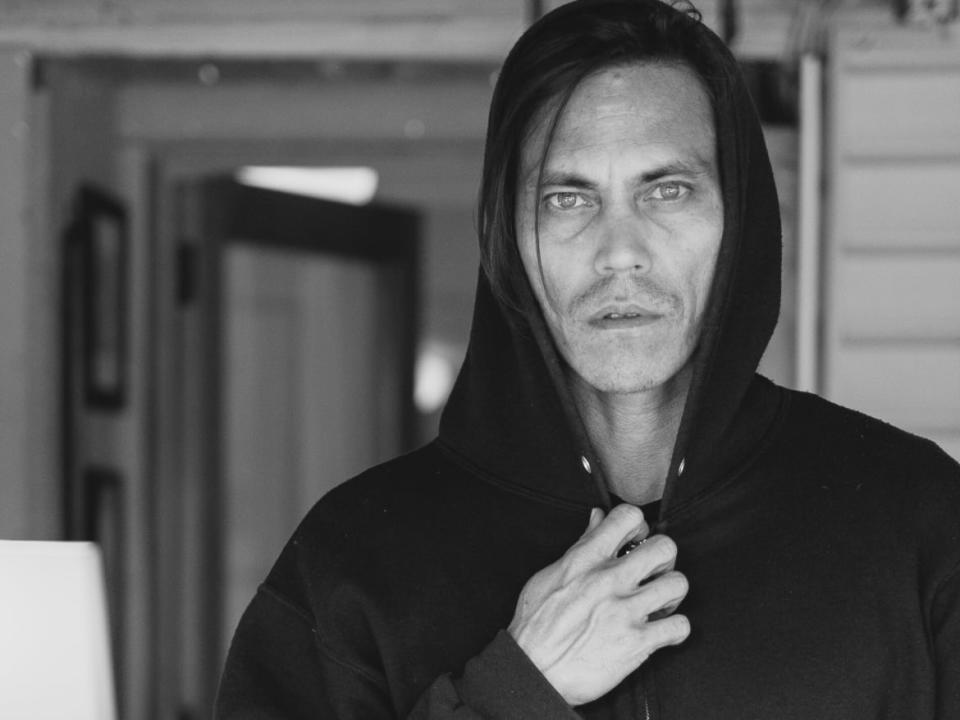
Chris Kahunahana
“We can’t afford to live here,” Kahunahana says bluntly. “Our religion is based on the land. How do you be Hawaiian without the land?”
And there’s a reason why the film itself is called Waikiki, a nod to the hegemonic tourist industry in Hawaii, fueled by Hollywood’s portrayals of the islands as a dreamy paradise where Native Hawaiians are friendly, hospitable and perpetually in service to the beloved white savior-visitors and their “exotic fantasies.” Today, this notion of a Hawaiian paradise has become a lucrative industry raking in billions of dollars in revenue a year. Kahunahana hopes to turn this delusion on its head.
Waikiki was the first American experiment in tourism, the “crown jewel” as Kahunahana calls it. But it was an important and beloved land for Native Hawaiians too, “the place where our queens went and had houses on the beach.”
In the Hawaiian language, waikīkīi means “spouting water.” The area was deemed special for its exceptionally fertile lands which allowed plant and sea life to thrive, guided by the ahupuaʻa system and the fishing and farming techniques developed by Hawaiians who tended them for generations. “Nature provides everything,” he asserts.
The way Kahunahana talks about the connection between his people and their land is exceedingly evident in his film: “The land is the chief, the land is primary… We take care of the land, the land takes care of us. The land is aina, that which feeds us, which grows us. We come from the land in our cosmology, in our genealogy. We trace our roots back to the land. That’s our mother. We have an intimate relationship with the land that spans time and space. So when we see the desecration, exploitation of our resources for a fake economy which doesn’t value nature intrinsically… it’s offensive to us.”
It’s almost painful to listen to the way Waikiki was then formed: a canal built over fertile lands to control the flow of water in order to construct fake beaches for the plethora of resorts and hotels that make Waikiki what it is now.
“Without having stopped the flow of the natural water systems, they couldn’t have their trademark Waikiki,” Kahunahana explains.
Unlike the Hawaiian Waikīkī, “the marketed American version of Waikiki is an exploitation of Hawaii—this place, paradise,” where, he says, the economy is based on an extraction of Indigenous resources and the subservience of Indigenous people.
“I don’t know anybody who hasn’t been a waiter, valet, or bus boy. That’s what that industry provides, not living wage jobs… Tourism and the military, our largest industries, are extractive and exploitative.”
Now there are “10 million asses shitting into our water systems,” Kahunahana says. “That’s not sustainable… we can’t grow food for 10 million people. That’s not our correct responsibility and relationship to our land.” It’s antithetical to a culture that prized it’s responsibility to the land and was self-sufficient before contact with outsiders.
And Hollywood is absolutely complicit in the oppression faced by Hawaiians. The film industry was used as a propaganda arm to justify the illegal annexation of Hawaii, the labor exploitation of Hawaiians, the ongoing militaristic destruction and robbery of sacred lands, and the unsustainable tourism on the islands.
It’s exactly why shows, most recently and notably HBO’s The White Lotus, absolutely need better representation in their writer’s rooms to give a more nuanced and in-depth look at the people whose lands are being occupied. Characters like “Lani” and “Kai,” secondary and tertiary roles who often feel like afterthoughts with no real arcs, are merely used as surface-level plot devices to lend the series a layer of wokeness. In past films portrayed on the islands, folks of Asian and Native descent were often deemed interchangeable. Even in cases where Natives were represented in larger numbers on film crews, they were still shut out from positions of power.
“In Hollywood, we’ve never been the main characters in our stories,” Kahunahana says.
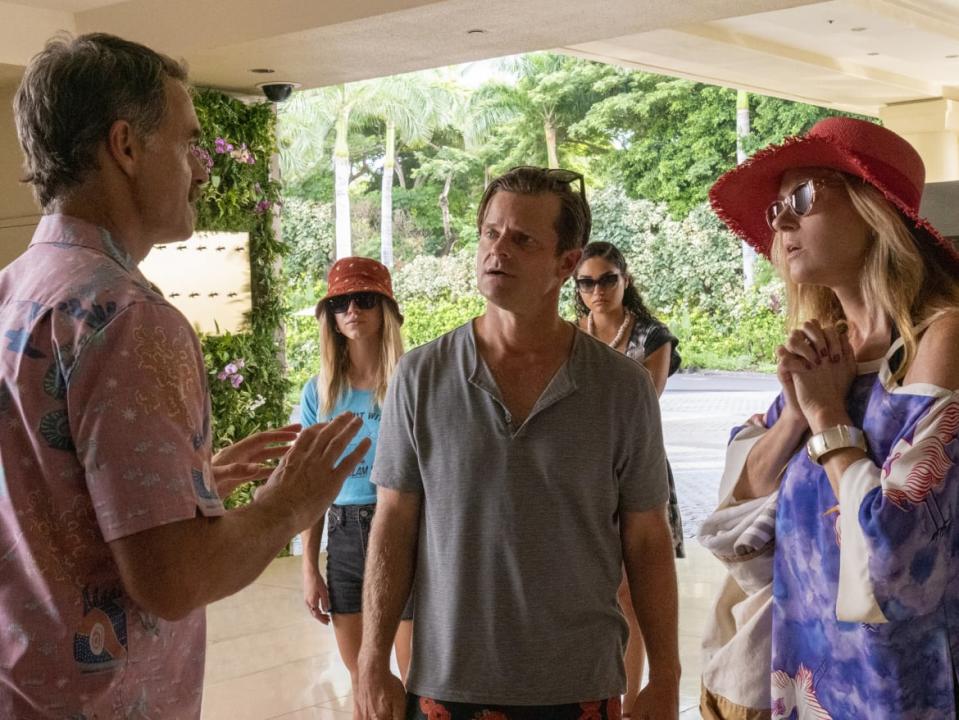
The cast of HBO's The White Lotus
He understands why many choose to work on these shows, even if it means doing a disservice to the representation of their culture or participating in the cultural erasure perpetrated by white showrunners.
“We need to feed our families,” Kahunahana says. “Sometimes we’re forced to participate in the exploitation of our culture. It’s tragic, but I don’t fault them at all. We all have our own different kuleana, different responsibilities.”
It’s why he’s fiercely motivated about being successful as a filmmaker: to show that there is a path available for kānaka maoli in film, and that they do have the right to demand more from those in Hollywood who are eager to use Hawaii as a backdrop for their HBO fantasies.
“Hawaii isn’t just a paradise,” Kahunahana says. “It’s not Brown Disneyland.”
He points to the film industry in New Zealand and their relationships with Māori filmmakers as a model of another Indigenous Polynesian population that has seen worldwide success. Kahunahana argues that Native Hawaiians should have access to a percentage of the annual revenue generated from tourism on the island, and that cultural consultants, as well as a Hawaiian “Brown Book,” a resource to help filmmakers work alongside Hawaiians with proper sensitivity towards the land and the people, should be made mandatory for any traveling film crews. He doesn’t just mean this for Hollywood, though. He believes all the “entitled visitors” would benefit from a fuller experience of Hawaii in all its grief and glory.
Kahunahana doesn’t know what that might look like exactly, but he knows what it shouldn’t be: “You can’t brownwash it. You can’t just throw a Hawaiian word on it and pretend like it’s not an exploitative business.”
That is a sentiment among many natives regarding Hawaii’s statehood and the duplicitous process that led to the annexation of the 50th state: a process that was non-existent. Over the years, the Land Back and Hawaiian Sovereignty Movements have only grown, and Kahunahana is certainly supportive of the cause.
“At the quote-unquote annexation, because there’s no treaty of annexation… Annexation is a document created between two independent bodies, saying yes, we’ll become part of you. That doesn’t exist; it’s a fallacy. How Hawaii quote-unquote became part of the United States was The Newlands Resolution, a joint resolution passed in the United States Congress... That’s like if me and my friend wanted your house and write each other a fricken deed for your house. So all of a sudden, now we’re your territory? That’s not even legal, internationally. You can’t just go write a deed for somebody’s shit. In anybody’s law that’s just not right.”
Apart from being overtaken by businessmen to build water-intensive sugar plantations and the pineapple crops which have become almost symbolic of the islands, Hawaii was also famously used as a military buffer state during World War II. Case in point: Pearl Harbor. While plantations no longer dominate the islands as labor-intensive operations; they’ve become idyllic tourist destinations, not unlike the antebellum slave-owning plantations of the South. Similarly, the military’s presence endures, making Hawaii one of the most densely militarized states under U.S. control. The island of Kahoʻolawe, considered sacred land, was long used as a bombing range for the Air Force, and the Navy only stopped live-fire exercises in 1990.
Kahunahana, in an acerbic tone, raged against the “sweetheart deals” that promoted the total desecration of Hawaiian land while leaving Native Hawaiians without resources and forced to prove their Native-ness over “blood quantum” rules that would otherwise shun them from claiming their stake in what little land was left over for Hawaiians to live on. Now, with the wrath of climate change wreaking havoc on cities across the world, Kahunahana can’t help but ask: “Who’s the better steward of the land?”
“We watched them for 200 years fucking it up,” he says. “The whole planet would benefit from Natives holding the land.”
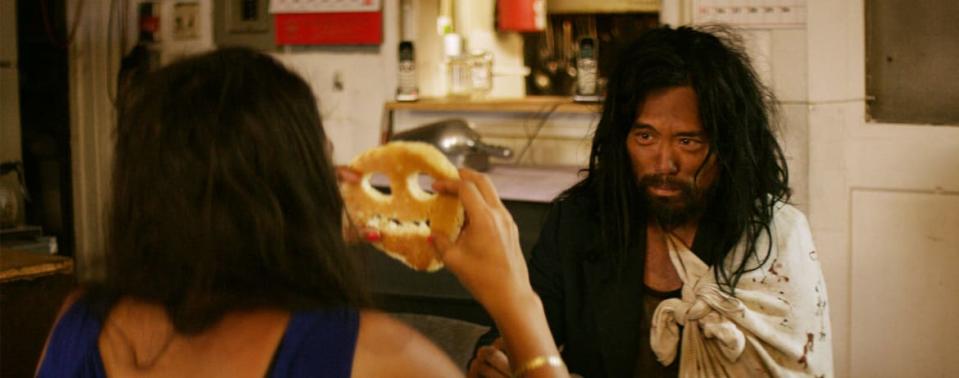
A scene from Chris Kahunahana's Waikiki
One experience, specifically, brought home the importance of this: his time on Mauna Kea.
“It’s illegal that they have anything on Mauna Kea at all,” Kahunahana argues. “Did they ask us to give them those roads? All these backdoor deals. It’s funny how the Hawaiians always get screwed out of our land. It’s just regular. Oh yeah, there you go, the ‘fake state’ stealing more land.”
It’s an ongoing struggle made much more difficult by the militarized response to the activists, and the parachute journalism brought on by an uninformed media writing misinformed articles to well-informed liberal readers who really believed that Native Hawaiians simply needed to stop being mad over a telescope and believe in science.
“People think the wrong was done at the overthrow but it’s still happening,” Kahunahana says. He described living for six months on Mauna Kea volunteering as part of the Native media arm, ready to help in any way he could—even if that meant putting his body on the line to be arrested.
“Give me a camera, man,” he says. “Put me in the middle of it. I’m just gonna hand you my memory cards. That’s how we operated for six months. [Department of] Land and Natural resources, fucking SWAT tactics—it was the largest mobilization of law enforcement in the state of Hawaii to arrest Hawaiians, protecting our land. So whose interests do they have in mind?” he asks.
“Being up there… I was able to further understand why these things are important. The sacredness of the Mauna, it’s wao akua, the realm of gods and spirits. It’s kapu… we didn’t even go up there. Kahuna, Ali’i, only for spiritual purposes did we go up there at all,” he continues. “No sites of archaeological existence. It’s god space.”
Much more, it was the brutal policing that happened on the mountain that stuck with Kahunahana, as remnants of his righteous anger reveal itself during our conversation.

A scene from Chris Kahunahana's Waikiki
“Their tactics, the psychological tactics, creating false alarms, spreading disinformation… keeping us up all night shining lights into the kūpuna tents so old people can’t sleep. I was emboldened by people’s commitment. We take our cues from the Mauna. The Mauna’s there forever; we are connected to that forever. No amount of money is going to sever us from our connection to the land,” he tells me.
“She calls, we’re there.”
Many times, Kahunahana remarks on the resilience of his people, and his admiration for the younger generations is palpable. “I think it’s great that the youth are youthing,” he says, referring to the many ways young Hawaiians have taken to social media to express their culture loudly and proudly. “That’s their interaction with the world, their voice... They haven’t learned to be cynical. So I think it’s beautiful and empowering.”
His focus is on the money—to provide a space for those coming up in the industry who can help grow the vibrant and independent kānaka maoli film community, and contribute to a “culture of funding” that helps up-and-coming filmmakers believe in more possibilities for their stories.
And Kahunahana continues to accomplish much in his own right, working on four different creative projects—from an installation piece for Hawaiian arts in Honolulu that focuses on Mauna Kea, to a near-future episodic series that tells the stories of Polynesian climate refugees and the birth of the first human AI hybrid. He’s also directing two major motion pictures with two amazing production teams that are fully funded and slated to shoot in the next year.
“A Hawaiian to direct Hawaiian stories,” he says, as if he almost can’t believe it’s happening to him. “Times are changing and producers are seeing the value in hiring Indigenous directors to direct Indigenous stories.”
Get our top stories in your inbox every day. Sign up now!
Daily Beast Membership: Beast Inside goes deeper on the stories that matter to you. Learn more.

